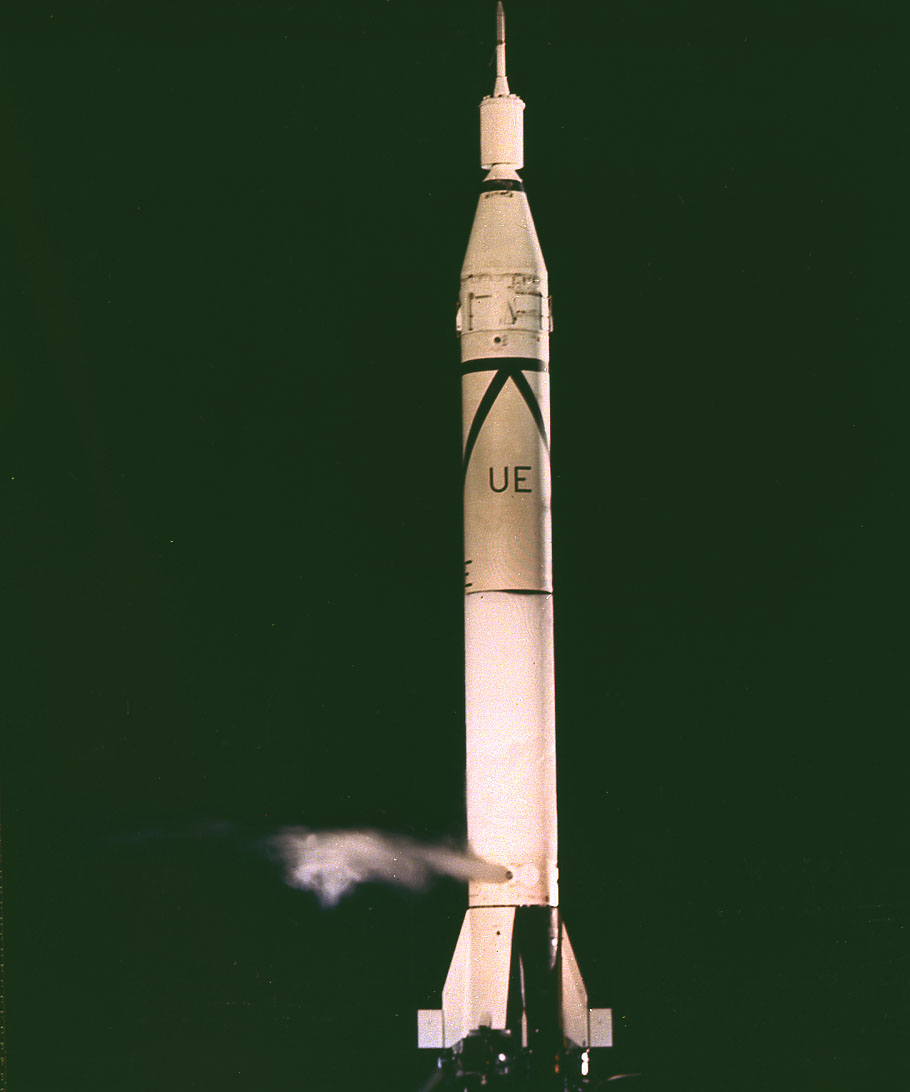
Juno-I
In-activeChrysler (CHR)
Jan. 31, 1958
Description
The Juno I was a four-stage American booster rocket which launched America's first satellite, Explorer 1 in 1958. A member of thr redstone family, it was derived from the Jupiter-C sounding rocket.
Specifications
-
Stages
4 -
Length
21.2 m -
Diameter
1.78 m -
Fairing Diameter
1.78 m -
Launch Mass
29.0 T -
Thrust
416.0 kN
Family
-
Name
Juno-I -
Family
― -
Variant
Juno I -
Alias
― -
Full Name
Juno-I
Payload Capacity
-
Launch Cost
― -
Low Earth Orbit
11.0 kg -
Geostationary Transfer
Orbit
― -
Direct Geostationary
― -
Sun-Synchronous Capacity
―
Chrysler
Commercial
None
CHR 1950In July 1959, NASA chose the Redstone missile as the basis for the Mercury-Redstone Launch Vehicle to be used for suborbital test flights of the Project Mercury spacecraft. Three unmanned MRLV launch attempts were made between November 1960 and March 1961, two of which were successful. The MRLV successfully launched the chimpanzee Ham, and astronauts Alan Shepard and Gus Grissom on three suborbital flights in January, May and July 1961, respectively.
Juno-I | Beacon
Chrysler | United States of AmericaCape Canaveral SFS, FL, USA
Oct. 23, 1958, 3:21 a.m.
Juno-I | Explorer 5
Chrysler | United States of AmericaCape Canaveral SFS, FL, USA
Aug. 24, 1958, 6:17 a.m.
Juno-I | Explorer 4
Chrysler | United States of AmericaCape Canaveral SFS, FL, USA
July 26, 1958, 3 p.m.
Juno-I | Explorer 3
Chrysler | United States of AmericaCape Canaveral SFS, FL, USA
March 26, 1958, 5:38 p.m.
Juno-I | Explorer 2
Chrysler | United States of AmericaCape Canaveral SFS, FL, USA
March 5, 1958, 6:27 p.m.
H3-22
Michibiki 5 (QZS-5)
Yoshinobu Launch Complex LP-2 - Tanegashima Space Center, JapanQZSS (Quasi Zenith Satellite System) is a Japanese satellite navigation system operating from inclined, elliptical geosynchronous orbits to achieve o…
Electron
The Wisdom God Guides (iQPS Launch 6)
Rocket Lab Launch Complex 1B - Rocket Lab Launch Complex 1, Mahia Peninsula, New ZealandSynthetic aperture radar Earth observation satellite for Japanese Earth imaging company iQPS.
New Shepard
NS-37
West Texas Suborbital Launch Site/ Corn Ranch - Corn Ranch, Van Horn, TX, USANS-37 is the 16th crewed flight for the New Shepard program and the 37th in the New Shepard program's history.
Long March 5
TJSW-23
101 - Wenchang Space Launch Site, People's Republic of ChinaChinese classified satellite claimed to be for communication technology test purposes. Actual mission not known.
Electron
Don't Be Such A Square (STP-S30)
Rocket Lab Launch Complex 2 (Launch Area 0 C) - Wallops Flight Facility, Virginia, USASTP-S30 is a complex mission that will deliver research experiments and technology demonstrations to orbit for the DoD and contribute to future space…

